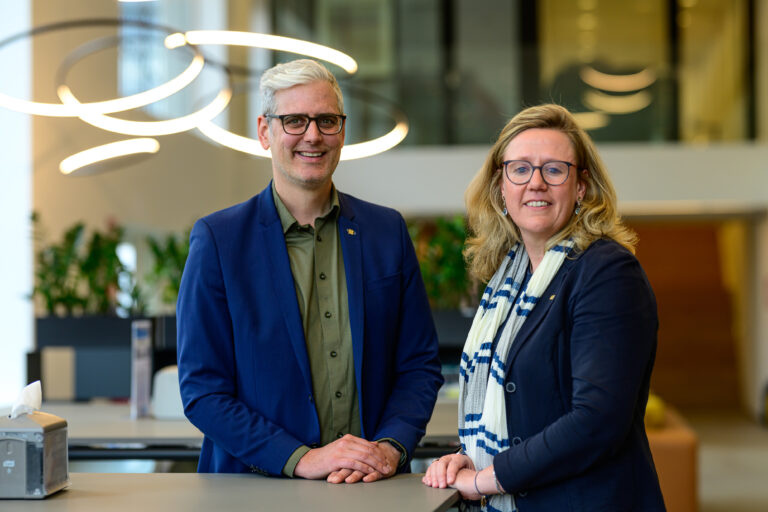⌂ > About us > Sustainability > ESG Stakeholders
Exploring the future of smart infrastructure
“When a data center like LCL sets quite some goals around sustainability and resilience, it looks for partners that can deliver more than just components. We believe we can co-create solutions that are not only technically robust, but also aligned with clear sustainability goals”, says Katrien Valkiers, Sustainability Manager at Siemens Belgium-Luxembourg. Or as Samuel Hallier, Head of Sales Smart Infrastructure at Siemens Belgium-Luxembourg, puts it: “Our goal is to support data centers in becoming safer, smarter and more sustainable by combining the real and digital worlds.” For Siemens, this means applying digital twin technology, predictive analytics and services, as well as smart automation to help data centers operate with maximum efficiency and minimal environmental impact.
How does Siemens stay ahead of trends and challenges in the data center industry, especially when it comes to sustainability and energy efficiency?
Katrien Valkiers: “At Siemens, we’re fully committed to the energy transition. We’ve reduced our own CO₂ emissions by 60% since 2019 and aim to reduce the emissions in our own operations by 90% by 2030 and compensate residual emissions. These are science-based targets. We invest heavily in innovation, but always with real-world impact in mind. That includes co-developing new sustainable solutions with our partners and remaining fully committed to open, integrable technologies so customers are never locked in.”
Samuel Hallier: “For data centers, for instance, we integrate building automation, fire safety, and energy monitoring into one smart system. That enables energy savings and ensures up-time, reliability and operational resilience. We also bring proven technologies from other critical sectors into the data center context, such as AI-powered predictive analytics, digital twin simulations and grid-edge energy management. These digital twins allow operators to mirror their physical infrastructure virtually, enabling safe, real-time testing of new energy strategies, cooling setpoints or load shifting scenarios. It’s a game-changer in terms of proactive management. And just as important: we don’t offer generic tools. Siemens works in verticals, which means we tailor our technology portfolio to the specific needs of each sector. For data centers, that comes down to combining industrial rigour with IT flexibility, always grounded in the customer’s operational reality.”

How does Siemens contribute to the operational efficiency and sustainability of data centers like LCL?
Samuel Hallier: “Even within a limited scope today, we ensure that our technologies – like fire detection or switchgear – are future-ready. Beyond that, we bring a long-term vision: helping customers transition to smarter infrastructure. For example, our White Space Cooling Optimisation (WSCO) can reduce ongoing cooling energy use by more than 20%. Technologies like digital twins allow operators to model thermal upgrades or energy optimisation scenarios before deploying them, minimising risk and maximising returns.”
Katrien Valkiers: “LCL takes a lifecycle approach, which we fully support. Our tools could help assess not just how systems perform today, but how they will age and how to plan upgrades accordingly. We help detect inefficiencies before they show up in the energy bill. This is powered by a building management system which enables predictive maintenance and real-time transparency across the entire infrastructure. Those insights we share across other customer environments, from chemicals to pharma and beyond.”
What key projects or technologies has Siemens implemented within LCL’s infrastructure?
Samuel Hallier: We’ve delivered low-GWP (Global Warming Potential) fire extinguishing systems with an inert gas consisting of 100% nitrogen (IG100), upgraded detection panels, and middle- and low-voltage switchgear that supports resilient power delivery. These systems were selected for environmental credentials, like reduced leakage risk and optimised component lifespan.”
How would you evaluate the collaboration with LCL?
Katrien Valkiers: “What stands out is that at LCL, sustainability is embedded in how they work: how they plan, procure and operate. That mindset creates space for real innovation and is aligned with our philosophy and processes.”
Samuel Hallier: “LCL is technically sharp and strategically focused. They know what they want, and at the same time they are open to ideas. LCL consults us on a regular basis and trusts partners to bring their best expertise to the table – just as they do themselves. That makes working together very effective. There’s also a genuine appetite to build a more integrated, smart infrastructure.”
What new technologies or solutions Siemens is working on to further decarbonise customer activities?
Katrien Valkiers: “AI-based control systems are promising. These technologies allow data centers to optimise energy use in real time and align better with renewable energy availability. We’re also exploring microgrid integration and modular energy infrastructure. All of these are geared towards making data centers active contributors to a more stable, decarbonised grid.”
Samue Hallier: “We do more than develop the tools, we’re also aligning them with customer needs. That includes predictive maintenance, dynamic simulation and simulation-driven design. The goal is simple: reduce emissions while enhancing performance.”




